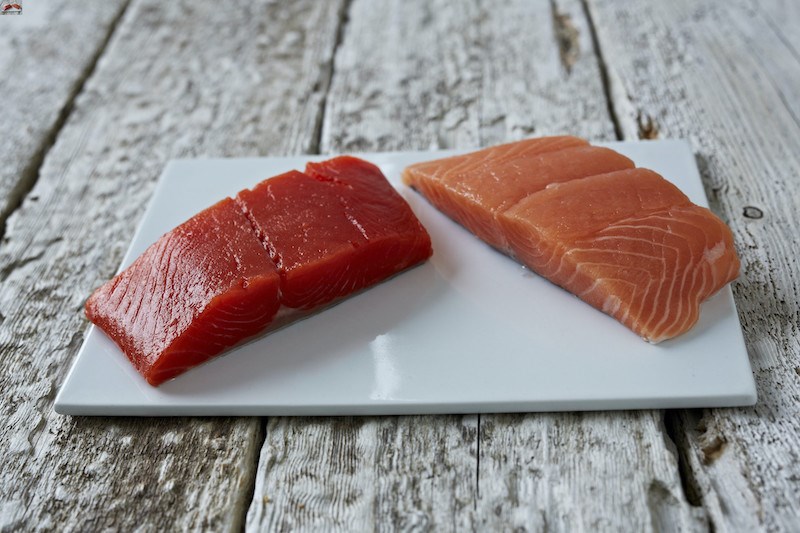
Salmon is one of the most popular fish in kitchens around the world. Here in Canada, you can find it in an upscale restaurant as the centerpiece of a signature dish, or grilled outside on a bonfire for a cozy, family-style meal.
Voted by Canadians as their favourite fish in a recent study, salmon is a national food icon among the ranks of maple syrup, blueberries and poutine. Here are some chef-worthy tips for selecting good quality salmon for your next meal.
Species and flavour profile.
There are five main species of Pacific salmon that are almost always wild, and each has a different flavor. For the highest fat content and silken texture look for king (chinook) salmon. Sockeye (red) salmon is lower in fat, which makes for a fuller-flavoured bite and is best for grilling or roasting because of its firmness.
Coho (silver) is a much leaner variety that’s perfect for those who prefer a subtle taste. Pink (humpback) is the softest and most delicate type of salmon, which has a smaller flake size and is found mostly canned. Keta (chum/dog/silverbrite) is mild in flavour and flaky in texture making it perfect for saucy recipes like chowders or curries.
Buying in season.
If you’re looking to plate wild, fresh salmon that’s in season it’s best to shop between late spring through early fall. But do not forget that delicious smoked, frozen and canned options are available year-round. They’re preserved during peak freshness, so you don’t lose out on flavour or nutrients.
Farmed vs. wild.
According to dietitians, salmon is a nutrient-rich food that should be a staple in all diets. All servings of salmon are a good source of omega-3 fatty acids and vitamins A and D, but wild salmon is the gold standard, packing more nutritional benefit per ounce. It can be identified by leaner white fat lines compared to farmed.
What to look for.
Choose filets that are bright and saturated in colour. Look for hues ranging from deep shades of red to vibrant coral or bright pink. Filets that are most fresh will also have a distinct contrast between the muscle and the fat.
Credible sustainable options.
Overfishing, illegal fishing and destructive fishing methods threaten fish populations, ecosystems and the livelihoods of those who fish legally. That’s why it’s important to make an environmentally friendly choice the next time you feel like salmon. Look for global, science-based certification labels like the MSC blue fish for wild seafood so you know it’s good for you and for the ocean, and look for the ASC label for farmed seafood options.
www.newscanada.com



